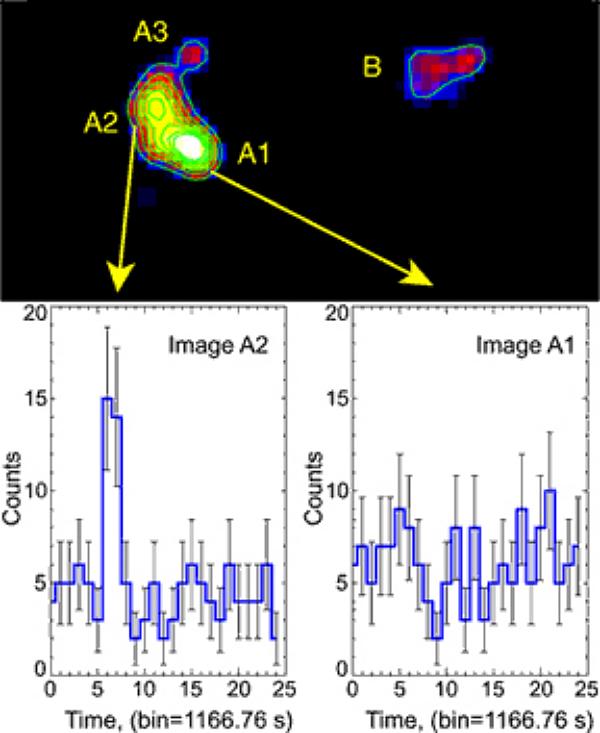
 Credit: NASA/George Chartas (PSU), Marshall Bautz (MIT)
Credit: NASA/George Chartas (PSU), Marshall Bautz (MIT)
Through an X-ray Lens Brightly
Active galaxies called quasars (quasi-stellar radio objects) are very
distant objects - so distant that the entire galaxy appears as a single
point of light. Quasars are extremely luminous, and their radiative power
is thought to be produced by accretion of portions of the galaxy's onto a
central supermassive black hole. If a nearby galaxy falls in front of a
more distant quasar, the matter in the nearby galaxy can act as a
"gravitational lens", bending the light from the quasar, causing the image
of the quasar to be split into many mirror images. Now astronomers using
the Chandra X-ray observatory have
observed that a distant quasar called RXJ
0911.4+0551, split into 4 separate images by the gravity of a
foreground galaxy. The 4 images of the quasar are shown in the image above.
Since quasars can vary in X-ray brightness, astronomers can use differences
in the variation as reflected in each separate image to tell important
information about the workings of gravity and the expansion of the
universe. For example, the lower charts show how the X-ray brightness of 2
quasar images (image A1 and A2) varies with time. Even though the images
above originate from the same quasar, an abrupt increase in the brightness
of the quasar is clearly seen in the chart on the lower left. In the same
time interval, the chart on the lower right shows that no such flare was
seen in image A1.
Last Week *
HEA Dictionary * Archive
* Search HEAPOW
* Education
Each week the HEASARC
brings you new, exciting and beautiful images from X-ray and Gamma ray
astronomy. Check back each week and be sure to check out the HEAPOW archive!
Page Author: Dr. Michael F.
Corcoran
Last modified December 18, 2000


